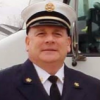In an ideal world, fire departments are always fully staffed with the needed ranks and positions – every shift, every call. But few departments can count on ideal circumstances. Members will occasionally need to “move up,” serving as acting engineer company officer for the shift, or assuming command responsibilities on a call for service.
A chief’s concerns about having a firefighter assume apparatus response or command responsibilities are equal for career, combination and volunteer fire departments. There are two questions to ask before allowing a member to take on greater responsibility:
- By moving up a member, am I putting the member other members or the public at higher risk?
- By moving up a member, am I placing myself or the agency at higher risk?
If the answer to either these questions is “yes,” then the member isn’t prepared to assume increased fireground responsibility.
Of course, you must also observe any applicable collective bargaining terms, employment agreements or state certifications. These factors are too varied to discuss here; instead, I’ll focus on what you need to do to prepare a member for greater responsibility, including serving as the incident commander (IC).
Preparing for the command role
Volunteer agencies may have increased risk exposure because of the historical (and misplaced) attitude that the most important thing is to get apparatus and members to the fire. This practice disregards the qualifications of the responders, ignoring the next logical question: What are they qualified to do once they get there?
Too many departments still have no minimum response policy, allow nonqualified drivers to drive apparatus to a call for service, and have very loose command standards, such as having the driver of the first-arriving apparatus take command until a line officer arrives. The risk of such protocols to the member, other members, you, the agency and the public is just too high.
Career departments generally have a more robust classification system. The capability of a member to assume next-level responsibilities, however, should be documented before the situation arises. That preparation starts with good policy, training on policy and consistent application of training and policy.
In preparing a member to take fireground command, we can look to the following illustration to remember the three main points of a move-up program:
1. Well-written policy
Before you consider which positions a member is qualified to assume, you need to identify the responsibilities and qualifications of each position. A Position Description policy satisfies this need. This policy should list the overall duties and responsibilities of each rank or position, from firefighter to apparatus operator to the entire chain of command. It should include all necessary certifications and training for each position, including any internal agency approvals. By detailing required certifications and training in policy, you help ensure all members know these expectations.
Regarding apparatus operators, policies should include what certifications, licensing and training is required before a member is cleared to drive and operate the apparatus. As a rule, require pump and aerial operator’s certifications for a qualified driver.
The same is true for members cleared to assume incident command. Policy should include what minimum certifications and training are required. A list of members cleared to assume incident command should be kept current, and all members should know who among them can assume command, if necessary.
The policy should also include a statement such as, “No member shall assume the duties of apparatus operator or higher rank unless they have fulfilled all necessary training and certification requirements for the position or have been instructed to assume such responsibilities by a higher-ranking member.”
2. Consistent training on policy
Once all members know there is an objective minimum qualifications policy, the next step is to consistently train on the relevant operations policies. Officers tasked with training responsibilities should track all member training activities to assess whether a member has, in fact, received training on an operations policy or procedure. We all know having a certification by itself doesn’t qualify a member to fulfill fireground responsibilities. Training on the policy and procedure provides the ability to assess whether a member is prepared to assume fireground command.
Further, with most departments responding to fewer and fewer working fires, training becomes the primary tool we use to assess a member’s knowledge and ability. Years on the job used to mean much more than it does today in terms of assumed experience. Policy and procedure should be as fixed in a member’s head as their experience. Indeed, training may be the only experience they can draw on when confronted with a low-frequency event.
What minimum package of policies and procedures are relevant to your department? It’s a mix of high-frequency/low-risk responses and low-frequency/high-risk responses. I believe every response is high risk, regardless of frequency, so I don’t include the risk level.
Using my department in Fair Haven, N.J., as an example, here’s the package of policies and procedures I want members to be trained on before they can assume any command.
Training should also include taking command of training activities and operations when a ranking officer is present. There’s nothing wrong with having a member assume response or command of a call for service in the presence of a higher-ranking member or letting a lower-ranking member keep command if a higher-ranking member arrives on scene. Nothing provides the needed on-scene training and builds confidence and mental muscle memory like having command of various operations.
3. Consistent policy application
Good policy and training are all brought together by consistent application. When line officers consistently engage in operations based on policy and procedure, lower-ranking members follow that lead. They know they have a policy and procedure to turn to for initial response. This consistency also reduces the chance a member assuming command will freeze or lock up. Being trained on procedure gives the member a roadmap to rely on immediately. It also gives ranking officers confidence that any given response will be consistent.
Make the leap – with confidence
Move-up assignments are exciting and important professional development opportunities for firefighters, but they pose significant risk and therefore must involve proper preparation. Before a member is approved for apparatus operation or command, you need good policies and procedures in place and consistently applied across the organization. In addition, members must first obtain all qualifications and certifications and have had the opportunity to take command during training or supervised calls. Applying this three-pronged strategy will provide you and your agency with confidence if and when you have to call on a member to make the leap from firefighter to incident commander.
















